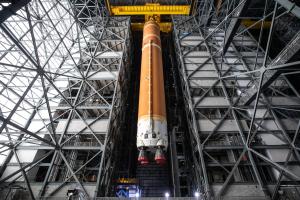Many people can reflect on their childhoods and identify the one moment that sparked their passion, ultimately illuminating the path they would take to reach their career goals. For Concha Reid, it was the absence of light in her Virgin Islands hometown that ignited her interest in power systems.
“We frequently had power outages on the island when I was growing up,” said Reid. “The reliability of the electrical grid wasn’t as robust as the United States, and hurricanes knocked out electrical power for lengthy periods of time.”
Reid saw the potential for power systems to be more reliable and realized that studying math and science was an avenue to solving real-world problems. Her school on the island of St. Thomas didn’t have advanced placement courses, but her teachers recognized her love of learning and mentored her along the way.
“I had very involved math, physics, and chemistry teachers, and I even took some architectural drawing classes where my father was my instructor,” said Reid. “My father taught me how to do a prospective drawing using a T-Square and a scale that could translate into a real-life structure or building.”
Reid came to the U.S. and earned her bachelor’s and master’s degrees in electrical engineering with an emphasis on power systems. During graduate school, she met her husband, and they had three children.
“I took a bit of an untraditional path. I took some time off and raised our family for a little while before I came back into the workplace,” said Reid. “I think it’s something women should talk about more. I know there’s a movement that declares that women can do it all — and that may be so — but can we do it all to the best of our abilities if we’re trying to do everything? I think everyone needs to choose their own path and whatever works for them as a family.”
After her career break, Reid pursued her passion for power systems accepting a job in the Power Division at NASA’s Glenn Research Center in Cleveland where she worked with batteries and fuel cells. But her managers soon recognized her interpersonal skills and ability to take on a lot of responsibility, and they encouraged her to enter a NASA leadership development program. The program required her to take a temporary position, and she was thrilled to accept one with the European Service Module Integration Office.
Her new role was vital to Artemis. She was responsible for deliveries and exchanges of spaceflight hardware between NASA, Lockheed Martin, and the European Space Agency (ESA), which required working with many European countries and ESA contractors. Reid and her colleagues ensured technical objectives were completed and hardware was delivered on schedule.
She analyzed if incomplete objectives could pose a technical risk or additional cost and made decisions on how to move forward. She contributed hours of her time to streamlining processes for Artemis III and beyond. She managed all of this while racing against the clock to ensure the European Service Module — which provides the Orion spacecraft’s electricity, propulsion, air, and water — was delivered to Kennedy Space Center on time to be integrated with the rest of Orion.
“The fear of failure is real. It’s hard to go out there and do something you’ve never done before,” said Reid. “I’ve learned to embrace that fear and…to be open to new experiences, anticipate failures, and build strategies upfront that could counteract any obstacles I may come across. It’s part of the learning process of growing and developing as a leader.”
Reid has continued down her leadership path and now serves as the deputy manager for the Space Science Project Office.
“Anyone who is interested in the STEM field needs fortitude and dedication,” said Reid. “There are many paths you can take; you just may have to do a little exploring to figure out the best fit for you.”
NASA is in a Golden Era of aeronautics and space exploration. In partnership with commercial and private businesses, NASA is currently making history with significant missions such as Artemis, X-57 Maxwell, and X-59 Quesst. The NASA’s Modern History Makers series highlights members of NASA Glenn’s workforce who make these remarkable missions possible.
Jacqueline Minerd
NASA’s Glenn Research Center
































